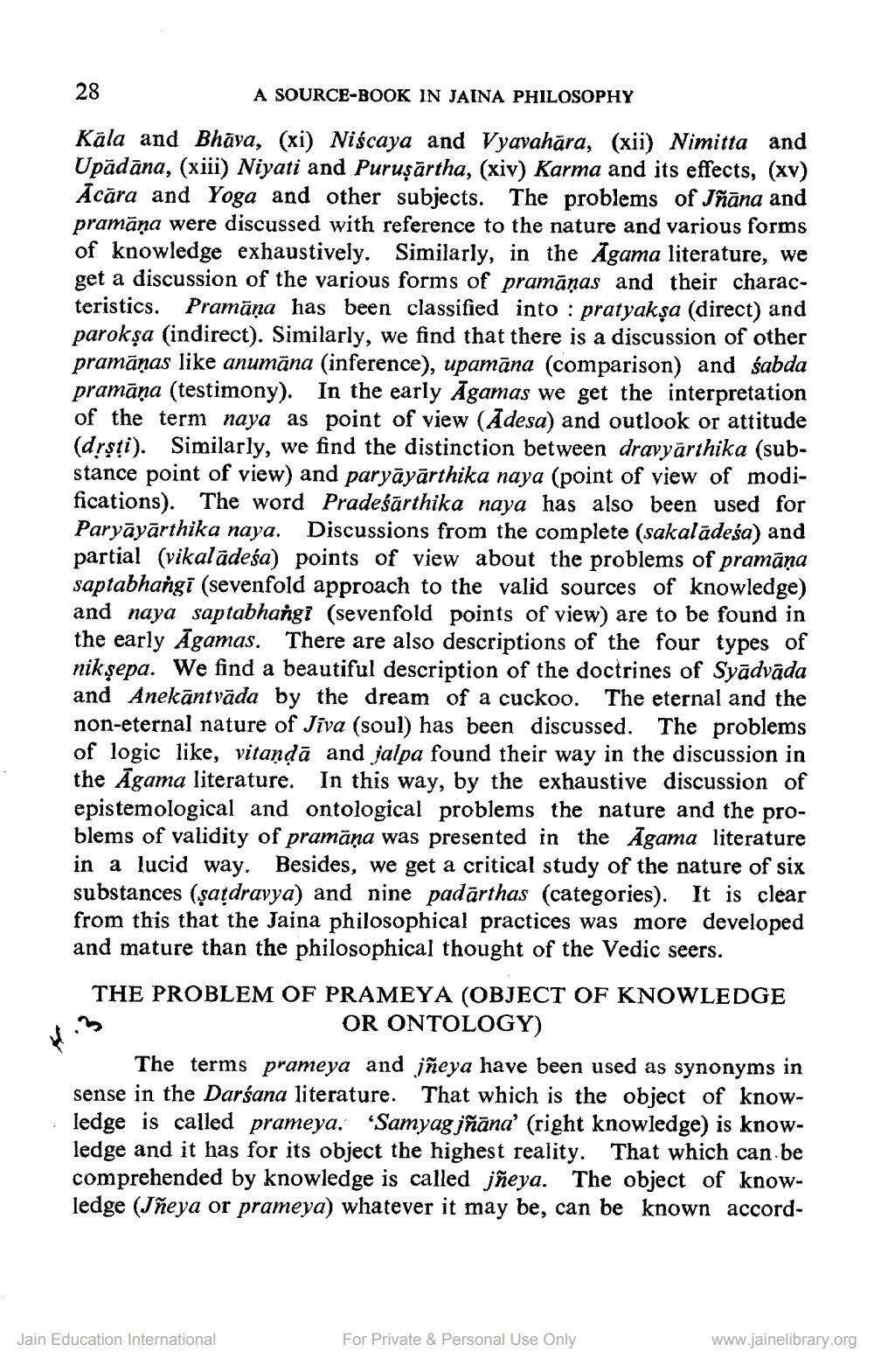________________
28
A SOURCE-BOOK IN JAINA PHILOSOPHY
Kāla and Bhāva, (xi) Niscaya and Vyavahāra, (xii) Nimitta and Upādāna, (xiii) Niyati and Puruşārtha, (xiv) Karma and its effects, (xv) Ācāra and Yoga and other subjects. The problems of Jñāna and pramāņa were discussed with reference to the nature and various forms of knowledge exhaustively. Similarly, in the Agama literature, we get a discussion of the various forms of pramāṇas and their characteristics. Pramāna has been classified into : pratyakşa (direct) and parokșa (indirect). Similarly, we find that there is a discussion of other pramānas like anumāna (inference), upamāna (comparison) and sabda pramāna (testimony). In the early Āgamas we get the interpretation of the term naya as point of view (Adesa) and outlook or attitude (drsti). Similarly, we find the distinction between dravyārthika (substance point of view) and paryāyārthika naya (point of view of modifications). The word Pradeśārthika naya has also been used for Paryāyārthika naya. Discussions from the complete (sakalādeśa) and partial (vikalādeśa) points of view about the problems of pramāņa saptabhangi (sevenfold approach to the valid sources of knowledge) and naya saptabhangi (sevenfold points of view) are to be found in the early Āgamas. There are also descriptions of the four types of nik sepa. We find a beautiful description of the doctrines of Syādvāda and Anekāntvāda by the dream of a cuckoo. The eternal and the non-eternal nature of Jiva (soul) has been discussed. The problems of logic like, vitandā and jalpa found their way in the discussion in the Āgama literature. In this way, by the exhaustive discussion of epistemological and ontological problems the nature and the problems of validity of pramāṇa was presented in the Agama literature in a lucid way. Besides, we get a critical study of the nature of six substances (satdrayya) and nine padārthas (categories). It is clear from this that the Jaina philosophical practices was more developed and mature than the philosophical thought of the Vedic seers. THE PROBLEM OF PRAMEYA (OBJECT OF KNOWLEDGE
OR ONTOLOGY) The terms prameya and jñeya have been used as synonyms in sense in the Darśana literature. That which is the object of knowledge is called prameya. "Samyag jñāna' (right knowledge) is knowledge and it has for its object the highest reality. That which can be comprehended by knowledge is called jõeya. The object of knowledge (Jñeya or prameya) whatever it may be, can be known accord
Jain Education International
For Private & Personal Use Only
www.jainelibrary.org




